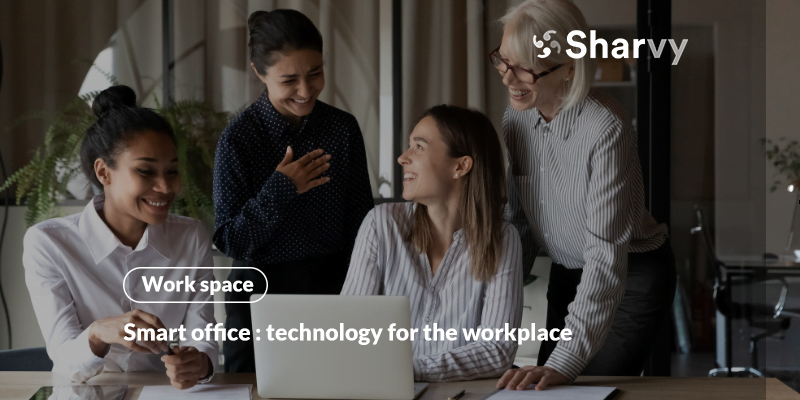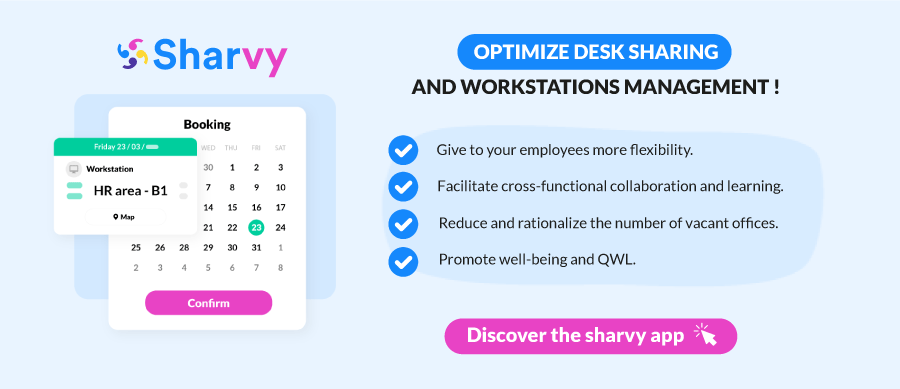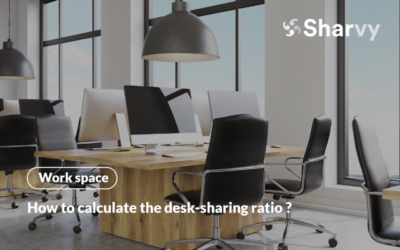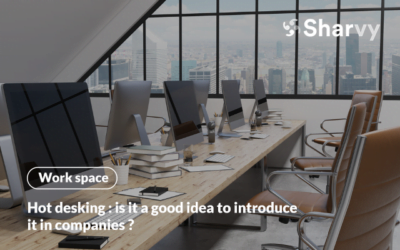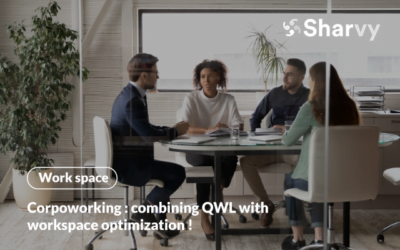At the opposite end of the spectrum from traditional offices, the Smart Office is gradually becoming a mediator for well-being and quality of life at work. The reason for this is apparent : it allows us to reinvent our employees’ workspaces by integrating various technologies (intelligent sensors, mobile applications, IoT platforms and solutions, etc).
That’s why it’s developing rapidly within companies. But what exactly does it mean? And above all, how is technology being used in the workplace?
What is Smart Office?
The Smart Office is an innovative workspace. It offers connected services to employees and enables them to meet their needs on site thanks to technology : connected objects, applications, etc. The Smart Office responds to several challenges, such as: improving the productivity of employees, facilitating their arrival on site or daily tasks, modernising workspaces, saving management costs, etc. The primary motivations can be very diverse.
However, as a general rule, any approach to digitising the workspace will serve to improve a company’s employer brand. The company will offer modern and digital services that meet the needs of its employees, so their well-being and quality of working life will be enhanced.
How is technology used in the workspace?
The Smart Office can be used in many different contexts, here are some of the main examples.
1. Enable the reservation of spaces
Digital solutions for reserving a workstation, a parking space, a meeting room, a place in the cafeteria… are multiplying. They meet a growing need. Who hasn’t experienced that awkward moment of not finding an available meeting room when you are hosting an important visitor? Or having to wait several minutes in the cafeteria at lunchtime for a table to become available? Having a dedicated digital tool shared between all employees avoids these frustrations and above all saves time. Employees can organise themself beforehand. For meeting rooms, it is also possible to place tablets at their entrance to reserve the room or see its availability.
2. Communicate and inform employees
In a company, sharing information at the right time and with the right people is essential. This means ensuring that, for example, managers are informed of important strategy news before their team. On the other hand, for non-confidential events or communications, everyone should have access to this information. The solution may be to install television screens in common or high-traffic areas (lift exits, entrance halls, etc.) to broadcast these communications. Companies with a mobile application or intranet can opt to share information via these channels.
3. Rethinking and redesigning work spaces
Connected objects or reservation solutions make it possible to analyse the use of space and equipment. By implementing such tools, a company can track various indicators and make informed management decisions regarding the layout of its offices.
For example:
- Accurately assess the average occupancy rate of its workspace.
- Record the number of employees and potentially anticipate staff growth.
- Consider peak times and quieter periods.
- Observe trends and determine a coherent rate of flex office usage.
4. Managing incidents
Another use can be the management of incidents, directly reported by employees. Imagine someone wanting to print a document, for example, but the printer has broken down : by scanning a QR code placed on the printer, he or she would automatically send an alert to the IT department, which would be able to intervene quickly.
Incident management should not be overlooked when it comes to quality of life at work : employees expect a smooth and serene experience on site, so it is important that they do not experience various breakdowns throughout the day.
5. Improving the energy performance of buildings
In recent years, many managers have taken advantage of their company’s relocation to go against the traditional organisation of their workspaces and (finally) move into an intelligent building.
For most, adopting a smart office is a way of meeting environmental challenges by reducing energy consumption. Technology, and in particular connected objects, can be used to manage a building efficiently. For example, by installing presence detectors, lights, air conditioning and heating can be switched on and off automatically. This makes the building less energy-intensive, and therefore saves the company money.
In conclusion
Adopting the Smart Office in a company is not just about modernizing workspaces; it is a true digital transformation that places technology at the service of employees and their well-being at work. By integrating innovative technological solutions such as smart sensors, mobile applications, and IoT platforms, the Smart Office revolutionizes work methods by offering flexibility and facilitating collaborative work. These connected and agile environments not only enhance operational efficiency but also improve the customer experience for the company’s clients, thereby strengthening customer relationships and competitiveness. For businesses, this digital transformation becomes an essential lever to adapt to the new realities of the professional world.
Have a question? Check out the FAQ!
How does the Smart Office contribute to improving collaborative work within a company?
The Smart Office facilitates collaborative work by providing intelligent spaces and digital tools tailored to new work methods. Through mobile applications and collaborative platforms, teams can reserve coworking spaces, organize meetings in open spaces, and coordinate tasks remotely via telecommuting. These technologies not only improve communication among employees but also enable better project management in teams, leading to increased productivity and greater agility in work organization.
Want to learn more? Check out our latest articles!
How to calculate the desk-sharing ratio?
What is the desk-sharing ratio? How do you calculate it? What is its purpose? Is it a good idea to introduce it in your company? The answers and our advice are in this article!
Hot desking : is it a good idea to introduce it in companies?
What is hot desking? Is it a good idea to introduce it in your company? What tips should I use? The answers are in this article!
Corpoworking : combining QWL with workspace optimization!
What is corpoworking? Why has it become so popular in recent years? What are the obstacles to its development? The answers are right here!
Subscribe to our newsletter!
Resources
Contact us
+44 117 463 6990

